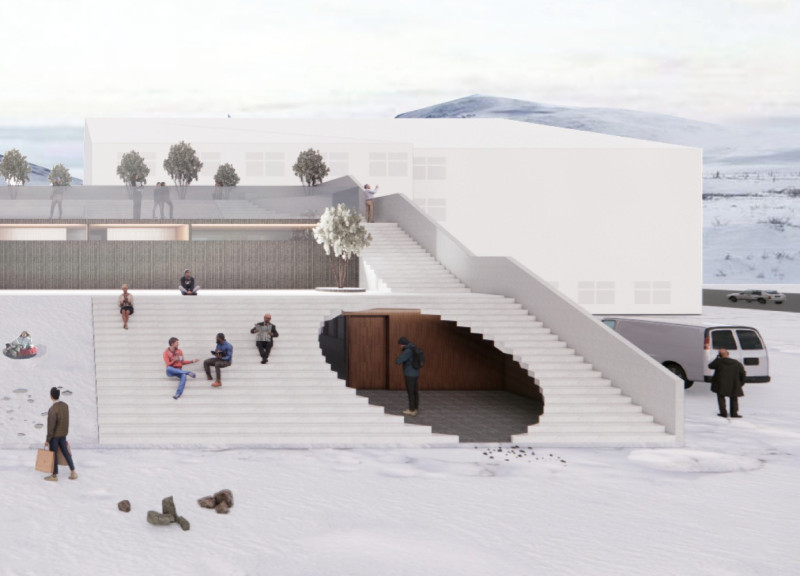5 key facts about this project
At its core, the project functions as a multifaceted space that caters to a variety of needs, likely serving residential, commercial, or communal purposes. This adaptable nature is evident in the layout, which emphasizes flexibility and efficiency in use. Through careful planning, the design accommodates an array of activities, ensuring that each area is utilized to its fullest potential. This multifunctionality is vital in urban contexts, where space is often at a premium.
The distinctive aspects of the project lie in its material choices and spatial organization. The materials selected for construction include concrete, glass, wood, and steel, each playing a pivotal role in defining the overall aesthetic and structural integrity. Concrete provides robustness and a sense of permanence, while glass allows for transparency and light, blurring the boundaries between indoor and outdoor spaces. The application of wood introduces warmth and a tactile quality, creating inviting areas for occupants. Steel elements contribute to the modern industrial aesthetic, supporting architectural features while ensuring longevity.
The design approach demonstrates an unwavering commitment to sustainability and environmental consideration. The strategic placement of windows maximizes natural light, reducing the dependency on artificial lighting during daytime hours. Additionally, the use of sustainable materials speaks to a growing trend in architecture that prioritizes ecological impact. This commitment not only enhances the building’s energy efficiency but also fosters a healthier environment for its users.
Unique design elements can be observed throughout the project. The incorporation of green spaces, whether through rooftop gardens or integrated landscaping, highlights a dedication to enhancing biodiversity and providing outdoor recreational areas. These features serve as essential components that promote well-being and community interaction. The architectural forms are crafted with precision, and the interplay of volumes creates visual interest and encourages exploration within the space.
The floor plans illustrate a well-organized flow, guiding occupants through different areas of the building seamlessly. Architectural sections reveal the interplay of light and shadow, creating dynamic experiences as one moves through the various levels. These considerations are crucial as they elevate the user experience, making navigation intuitive and engaging.
Moreover, the narrative woven throughout the design speaks to the values and aspirations of the community it serves. The structure does not merely exist as an isolated entity; rather, it engages with its surroundings, reflecting the cultural context and contributing to the urban tapestry. The design is thoughtfully contextualized, ensuring that it resonates with local identity while looking towards a progressive future.
In terms of architectural ideas, the project exemplifies a balance between innovation and practicality. By drawing inspiration from both natural and built environments, the design encapsulates a sense of place, encouraging a connection between occupants and their surroundings. The careful consideration of scale and proportion ensures that the architecture complements its context rather than overwhelms it.
For anyone interested in delving deeper into the nuances of this architectural endeavor, exploring the project’s presentation further will provide valuable insights. Engaging with architectural plans, sections, and design elements can reveal the intricate details that contribute to the overall success of the project. This exploration invites readers to appreciate how the intersection of creativity and functionality culminates in a successful architectural solution.


























